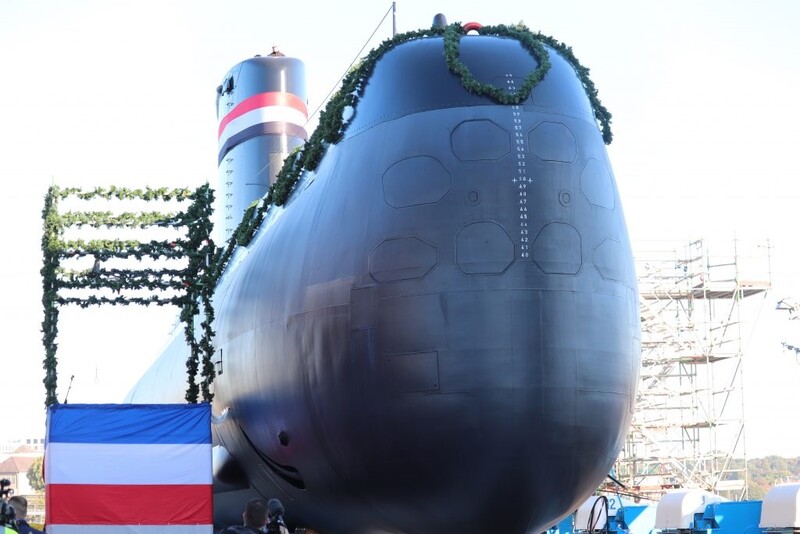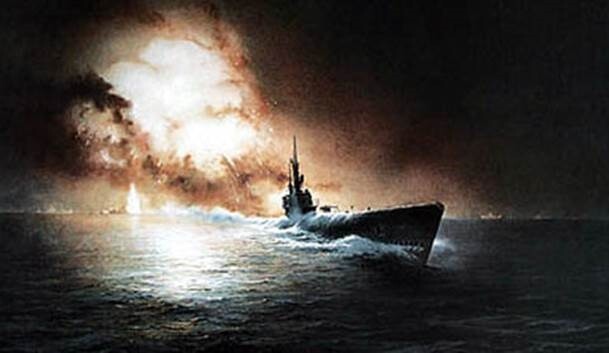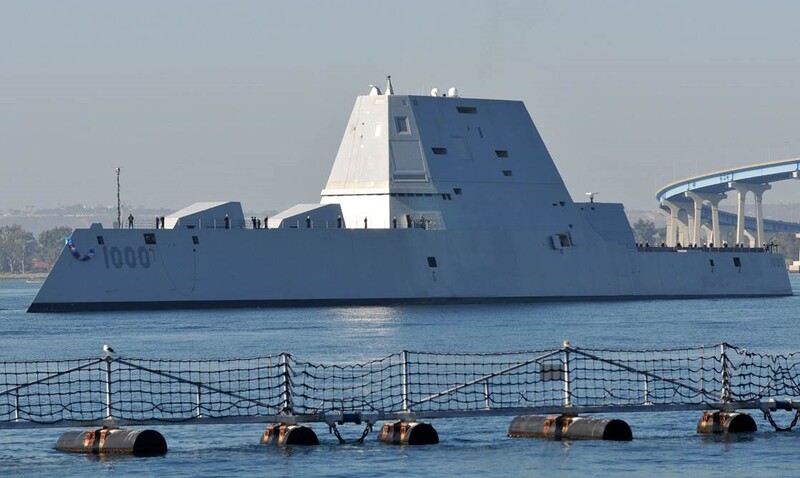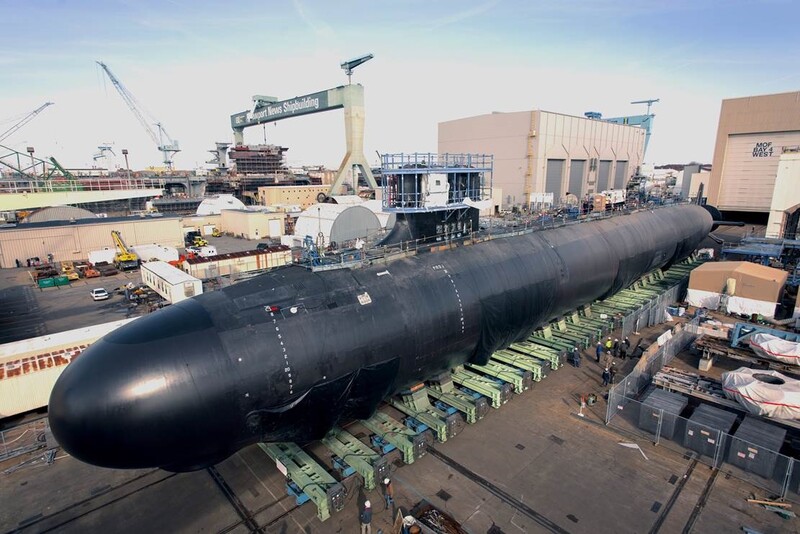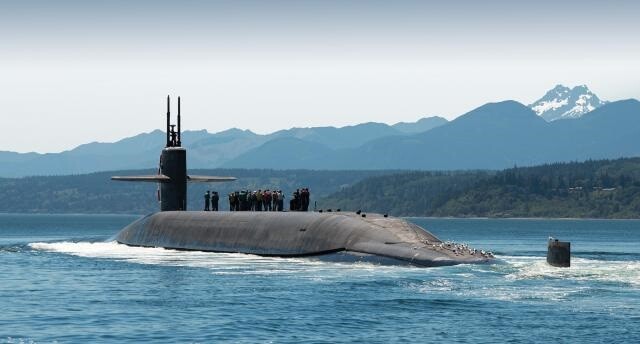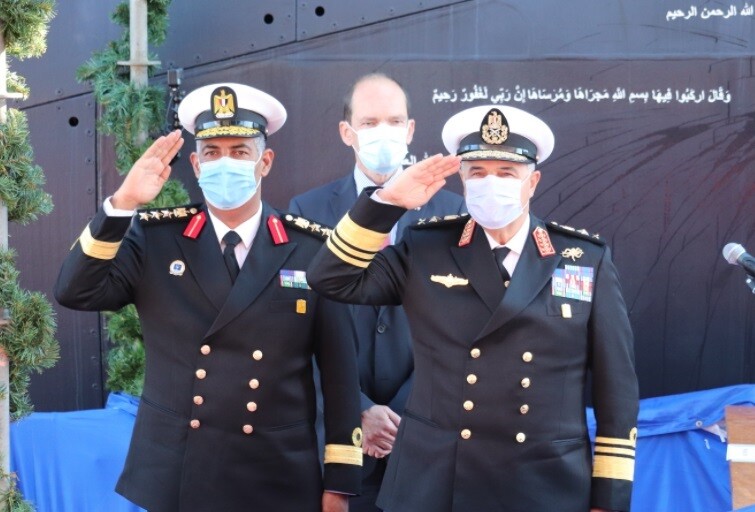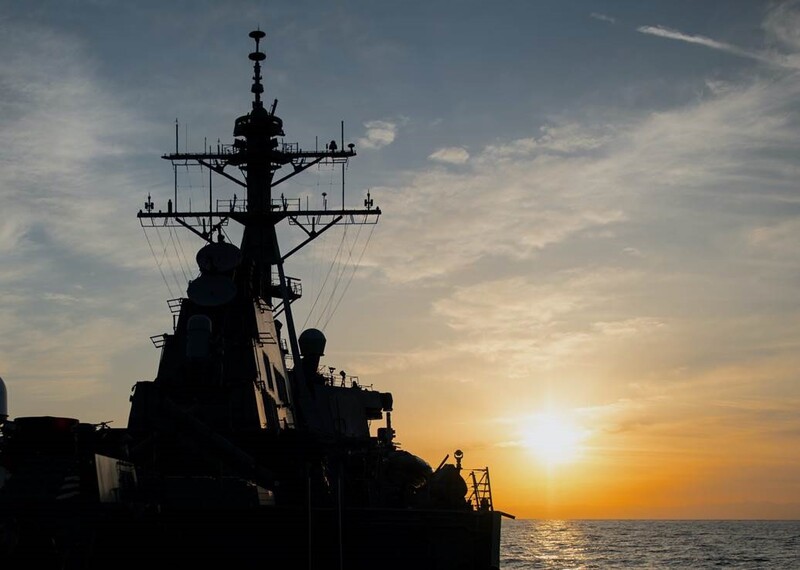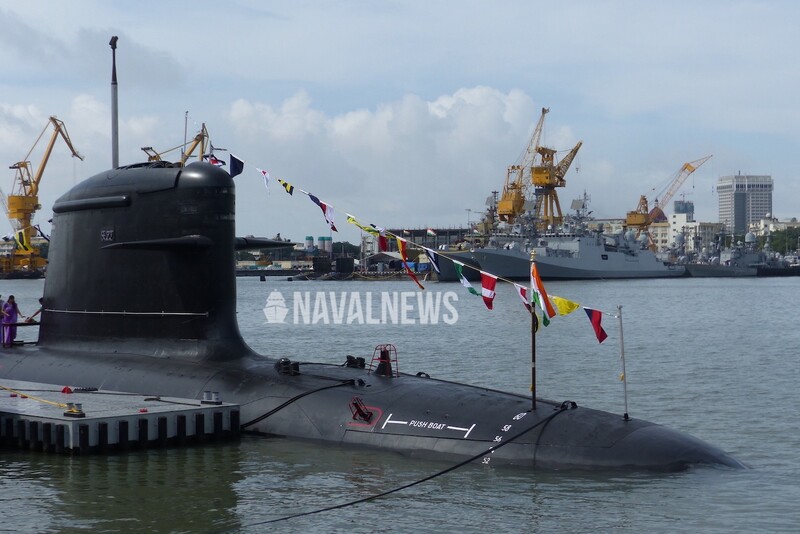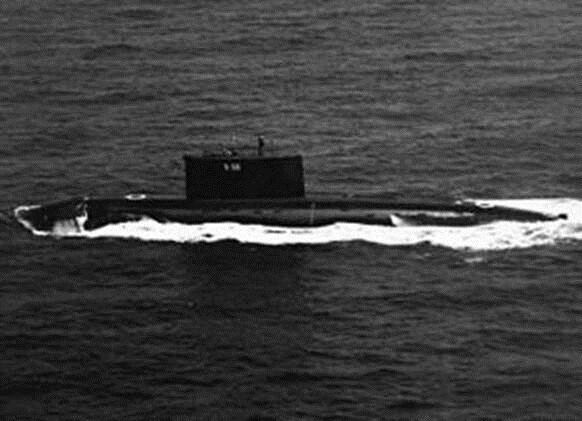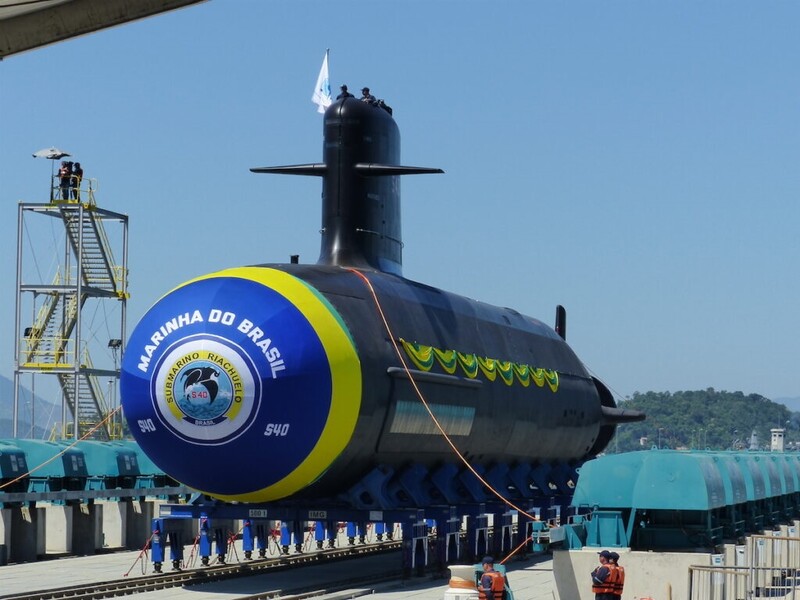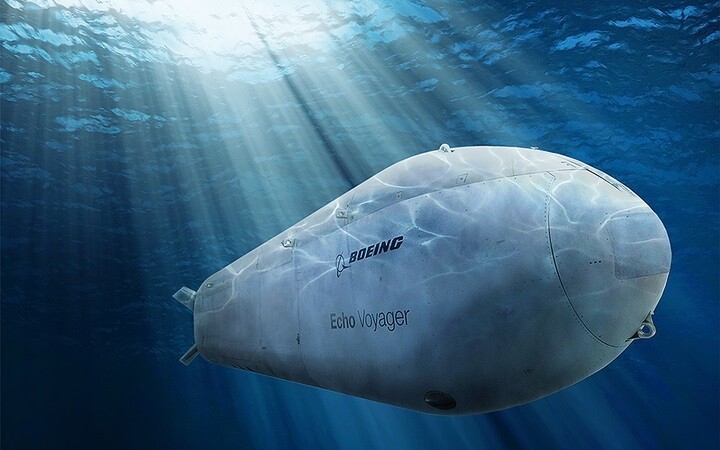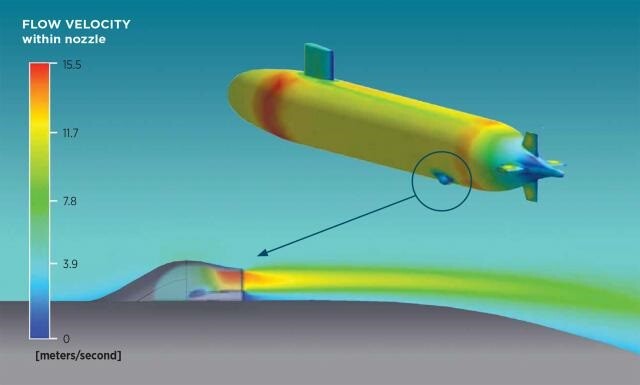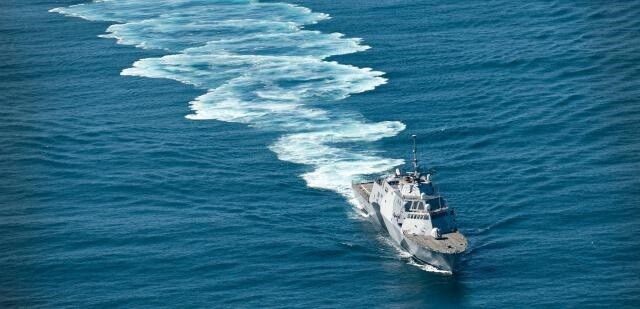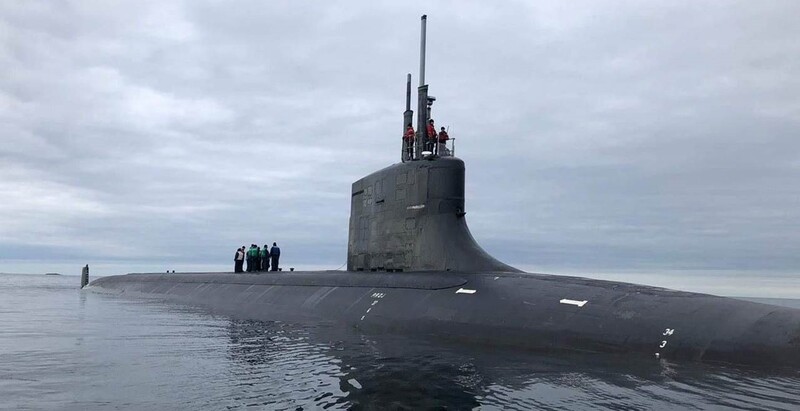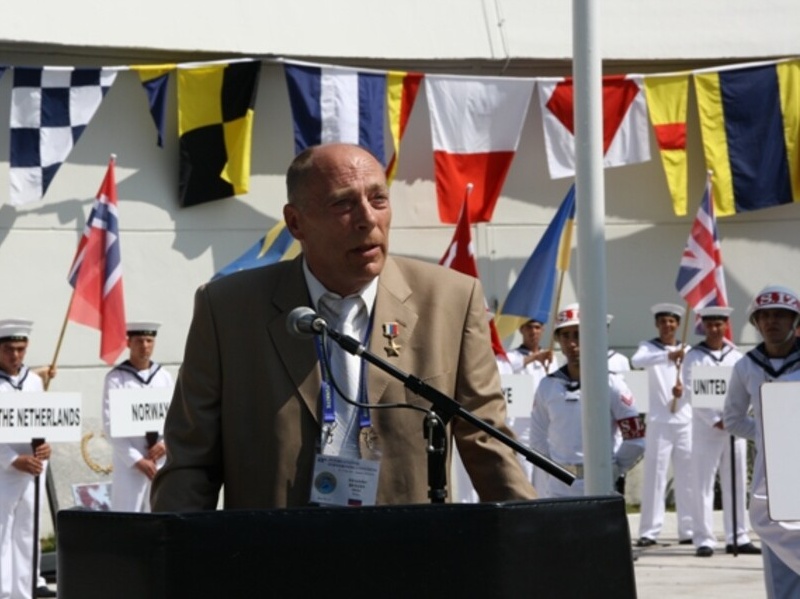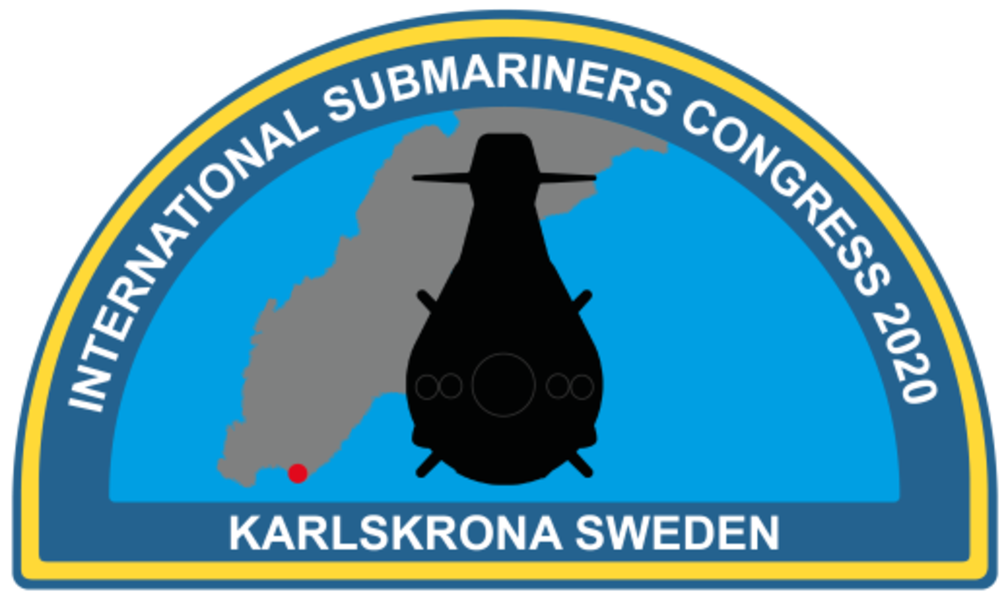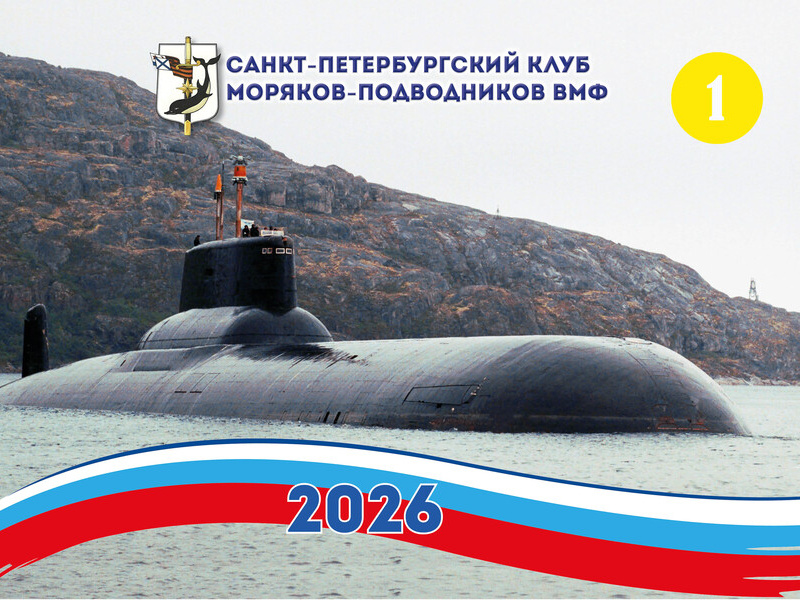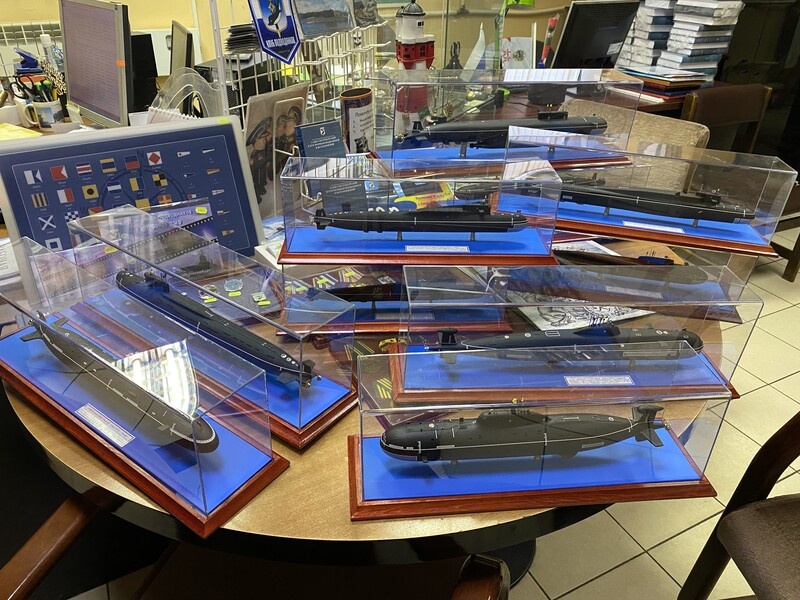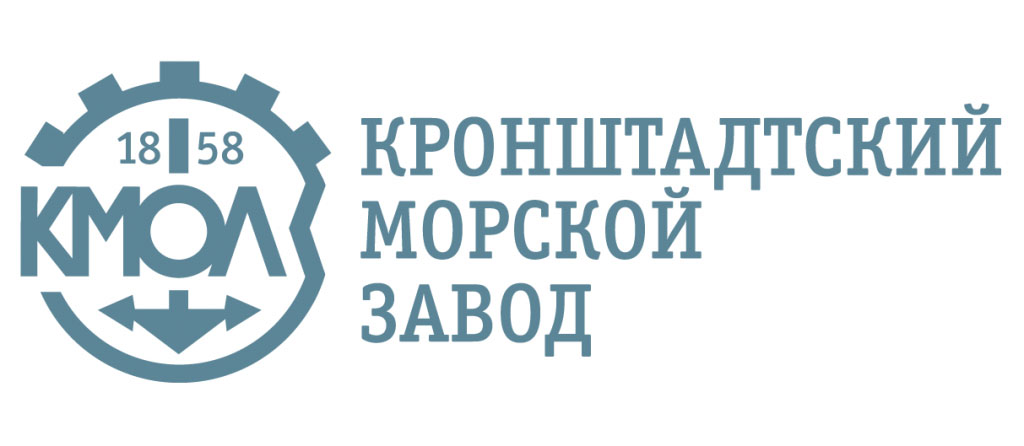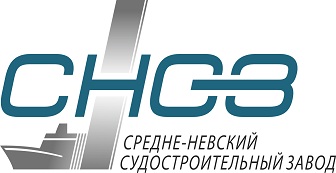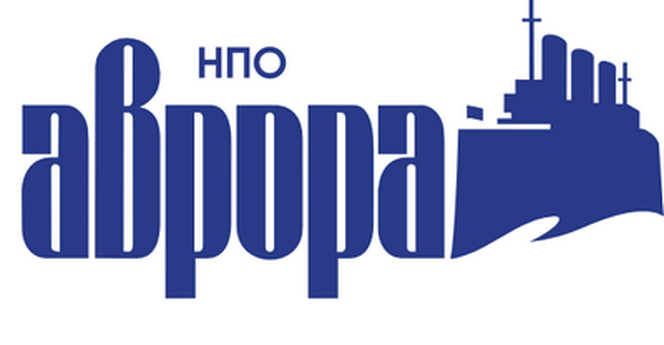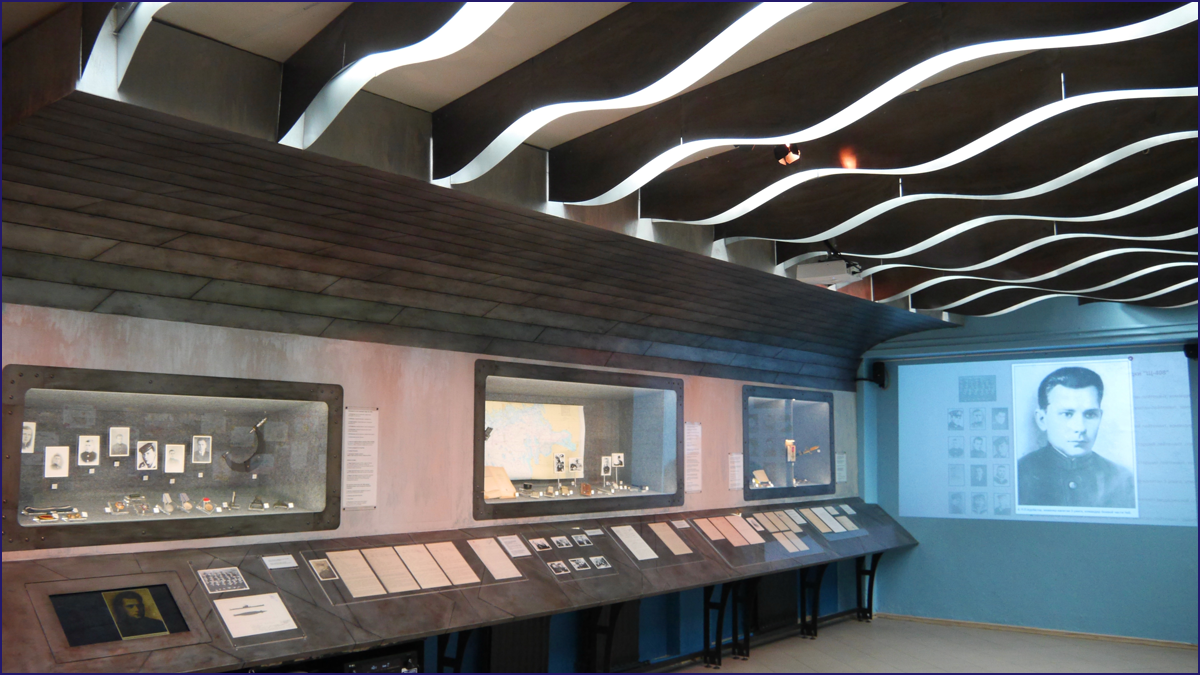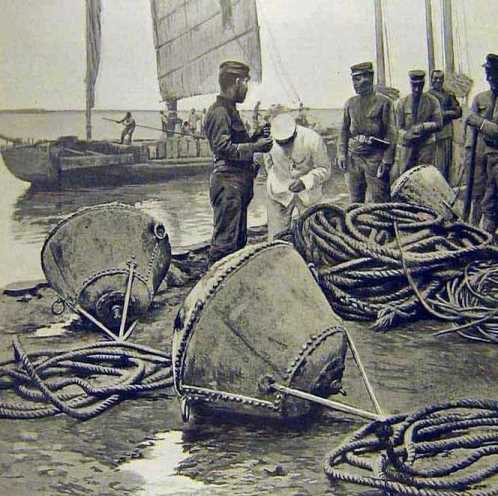Jet Submarine-Operation Seawolf-EB Not planning 3 Subs-Myanmar receives Indian Sub-Japan Names Sub-China Expands Yards-Egyptian Navy New Sub-New Sub named for The Barb-New DC Navy Museum-Orca Uncrewed Sub-New DDG & Attack Sub-EB New Contract
Date:31 Oct 2020
WWW.isausa.org
Happy Halloween
The Swedish Congress website
www.57isc.com
Registration is now on hold at the website above for the 2021Sweden Congress
Join 31 Other Nation's Submariners for fun and travel; once this virus is gone.
Consider becoming a member of the ISA-USA; you will benefit in many ways.
Be part of a 50-year tradition of international friendships of submarine sailors. Check out www.submariners.org for the history of the International Association
Travel to foreign countries to participate in conventions that usually include thirty-one states in attendance.
Establish friendships with submariners from other nations.
Contribute your Submarine history and experience in our World Wide e-mail blast.
We Cheerfully accept members that have not served but are interested in worldwide submarine activities
Lifetime membership only $50.00.
ISA/USA Membership Application. All new members of ISA/USA receive a Membership card, ISA/USA Patch, and new larger Vest Pin. On our weblink below and print an application:
https://nebula.wsimg.com/a06e11df9dcf28c2ae0ec803786d400d?AccessKeyId=4BBB4A7A11A45D3E3BF9&disposition=0&alloworigin=1
Send completed form and membership fee to:
John Bud Cunnally E.T.C. (SS) Ret. USN – President
International Submariners Association of the USA (ISA/USA)
4704 Coppola Drive
Mount Dora, Fl 32757-8069
Jetting Below the Surface
The turn of the noisy screw could be augmented by nearly silent auxiliary propulsion.
By Lieutenant Benjamin McFarland, U.S. Navy
October 2020
Proceedings
Vol. 146/10/1,412
US Navy ships have used screw propellers almost exclusively for nearly two centuries, but in recent years, the Navy has shifted to waterjet propulsion for a handful of surface ships.1 The submarine force may not be ready to embrace an all-waterjet primary propulsion system (à la The Hunt for Red October's "caterpillar drive"). As a graduate student in mechanical engineering at the Naval Postgraduate School (NPS), I developed the outline for a novel method of auxiliary waterjet propulsion for submarines. Using it, the Navy could modify current submarines inexpensively to create a nearly silent auxiliary system quickly.
Propulsion Pros and Cons
A propeller moves a large volume of water at a slow speed, while a waterjet moves a small volume of water at high speed. Waterjet propulsion is, therefore, able to propel a ship faster than a conventional screw propeller can.
A pump pushes water through a converging nozzle in a waterjet, increasing or decreasing the waters' speed by varying the nozzles aperture (in much the same way a garden hose nozzle can eject a thin, high-speed stream or a wider, slower one).2 Waterjet pumps typically have the ability to change speed almost instantaneously, so thrust can change at the push of a button. Changing the speed of a conventional propeller, on the other hand, requires spinning up or breaking the rotational speed of the massive main shaft, which takes time. To change a propeller's direction from forward to reverse takes even longer; the shaft must stop completely, then start again in the opposite direction. A waterjet can change thrust's direction quickly by positioning a flow diverter, also known as a "bucket," in the jet flow.3
An Ansys simulation using the most uncomplicated design to direct reactor cooling water outflow—a fixed, stationary unit. Estimated velocities within the flow range from about 4 to about 15.5 meters/second, or 7.75 to 30 knots. Jets placed on all the outlets could generate a forward speed for the submarine between 5 and 10 knots while generating none of the noise made when the main shaft spins the submarine's propeller. Courtesy of the author
Not only do waterjets save considerable time reversing thrust, but they also have few to no external moving parts (other than the thrust-directing buckets), making them ideal for operating in places where quiet is the highest virtue—that is, wherever the US submarine force typically operates.4
Applications requiring rapid changes between forward and reverse thrust are perfect for waterjet propulsion. For example, marine dynamic positioning systems use computer controllers to receive precise navigational input and output commands to waterjets to maintain a ship's position. These systems are popular in the oil and offshore wind industries.5
Despite the waterjet's advantages, a stigma exists among some ship designers because the jets are efficient at high speeds but inefficient at low speeds—the opposite of propeller efficiency.6 Submarines routinely operate at slow speeds, making waterjets a bad idea because they will be inefficient. However, efficiency is just one design parameter, and it may not be the driving factor in a design choice, considering the nearly limitless energy source (a nuclear reactor) on US submarines.
Outside of fiction, little research has been done into submarine waterjet propulsion. The Navy has taken a small step toward it by using ducted propellers, or "propulsors," for the Virginia and Columbia submarine classes.7 A propulsor surrounds a propeller with a converging shroud, both to block cavitation noise and increase the water's speed. However, the propeller still otherwise operates just as a conventional one does.
To abandon propellers and make submarines move entirely by waterjets would take an expensive and Herculean effort, involving not only Naval Sea Systems Command, but also Naval Reactors as well as designers from shipbuilders around the country. The merits of such an effort are outside the scope of this article. But what if an existing system could be adapted to create an auxiliary waterjet propulsion system at low cost and low risk?
Stand by for Thermo
The second law of thermodynamics dictates, among other things, that a machine cannot convert 100 percent of its heat generation into work; some heat must be rejected to the environment—the reason "perpetual motion" machines are impossible.
Submarine nuclear reactors reject waste heat by pumping cold seawater through a heat exchanger and then back out into the ocean. This flow exits perpendicular to both sides of the boat hull, producing no net thrust. Thus, the energy used to pump the seawater is as wasted as the heat it exchanges.
But a converging nozzle could be placed at the outlet to redirect the flow to produce thrust. If only forward thrust is desired, all that is required is one stationary component—an elbow joint, in effect—that could be added to any existing US submarine. For directable thrust, a control system would need to be added as well, to adjust each bucket's position. An enormous operational advantage could be gained at low cost, with minimal effort, and taking up almost none of a submarine's limited space.
Cavitation, Schmavitation
Fewer moving parts mean quieter submarines, but only to a point. Bernoulli's principle states that as the speed of a fluid increases, its pressure drops. If it drops low enough, the water can actually vaporize, forming bubbles that collapse—loudly. This is called cavitation, a generally undesirable phenomenon in the submarine world.
The higher the outflow speed, the lower its pressure, and the greater the probability of cavitation.
Higher water speed is achieved with a smaller nozzle outlet area. Theoretically, an infinitesimally small outlet surface area would make the water velocity nearly infinite. Enter friction: As the outlet area decreases, the friction in the nozzle increases, in turn reducing the volumetric flow rate and thrust. For any given fluid, there is a "sweet spot"—a nozzle outlet surface area that maximizes thrust at a given flow speed.8 Since there is no reason to increase the water speed beyond the "sweet spot," cavitation is intrinsically limited. Also, because cooling the nuclear reactor is the primary purpose of the seawater system and there is a minimum design seawater flow rate, the nozzle area cannot be reduced to a size that would go below this minimum.
Even in the event cavitation occurs, a sound suppressing device—an ejector—could be placed around the nozzle exit to reduce the noise transmitted to the open ocean.9 Ejectors have been used for decades to reduce jet engine noise, and a huge benefit is that they provide thrust augmentation thanks to a phenomenon known as entrainment.10 For a nozzle with no ejector, the high-speed water exiting the nozzle collides with relatively stationary seawater (also called entrained flow), imparting momentum to it. With no surface for this entrained flow to push off of, no extra thrust is produced. But the ejector's surface allows this entrained flow to push off it, thereby increasing the thrust.
Ejectors are not commonly used in waterjets because their surface areas must increase gradually to have the proper effect. This yields long—sometimes obnoxiously long—ejectors that protrude beyond the stern, where most propulsion systems are located.11 But submarine seawater system outlets are not at the stern; ample distance exists along the hull to attach an ejector without altering hull length.
Thunder (and Quiet) Below
Seabed and deep ocean warfare are topics of significant interest for the Navy. Deep ocean warfare should be to the Navy what air warfare was to the Army in the 1980s: the means to win cross-domain warfare. But the service at present is ill-prepared to gain and maintain dominance there.12
The US Navy must operate routinely on or near the seabed, in the open ocean, or the littorals, with either manned or uncrewed vehicles. The precision required to maneuver a submersible along the ocean floor must be significantly higher than away from the floor not to damage the submersible and manipulate devices such as mines or cable taps. In some applications, submersibles must have the ability to remain utterly stationary while fighting ocean currents, similar to surface ships' dynamic positioning systems.
A primary waterjet propulsion system, such as littoral combat ships use, allows the kind of rapid maneuvering that only directed thrust can generate, as shown here in the tight, zigzag wake of the USS Freedom (LCS-1). An auxiliary submarine waterjet system based on reactor seawater outflow would not permit such maneuvers, giving submarine crews new options for ultra-silent operation. US Navy (James Evans)
Most transatlantic communication occurs through cables laid on the seabed between North America and Europe.13 It is possible for adversaries to tap into, or even sever, these lines of communication. Russia has small deep-diving submarines made for this specific purpose.14 The United States also has assets with similar capabilities. Waterjets could improve their stealth and handling on and near the seabed.
Though there are many possible applications for the nearly silent propulsion generated by the proposed waterjets, the best might be on ballistic-missile submarines. The potential 5- to 10-knot speeds would allow Ohio-class boats, such as the USS Henry M. Jackson (SSBN-730), shown, and future Columbia-class subs to operate inside their patrol areas with the reactors running at lower levels, conserving nuclear fuel and extending their useful lives. US Navy (Amanda Gray)
An auxiliary waterjet system would be useful elsewhere in the deep, away from the ocean floor, as well. A submerged submarine whose propeller is incapacitated, whether by a near-miss torpedo detonation or an engineering casualty, is at grave risk. In the case of enemy action, damage to the main shaft or propeller may well be accompanied by damage to the secondary propulsion unit (positioned near the stern), leaving the sub without motive power. Waterjets could provide emergency propulsion.
My research suggests these auxiliary waterjets could propel a sub between 5 and 10 knots. The surprising implication is that the most useful and cost-saving application would be to add waterjets to ballistic-missile submarines (SSBNs), which routinely patrol at slow speeds to minimize risk of detection. Adding seawater outflow nozzles and ejectors to SSBNs would allow them to routinely patrol without using the main shaft at all, transmitting less noise to the water and burning less nuclear fuel. This could increase the life of the boat, since the hull can be strengthened and recertified as needed, without refueling or replacing the reactor. The life of aging Ohio-class boats could be extended modestly, while new Columbia-class submarines could expect service lives increased by many years—all for the cost of some ducting and a simple control system.
1. Nicholas Newman, "Pump It Up! Bigger and Better Uses for Water-Jet Technology," Engineering & Technology, October 2 2019.
2. Morton Alperin and Jiunn J. Wu, Underwater Ejector Propulsion Theory and Applications (Washington: Office of Naval Research, 1976).
3. Newman, "Pump It Up!"
4. Newman.
5. Newman.
6. Camarc LTD, "Waterjets vs. Propellers," camarc.com (2020).
7. Globe Composite Solutions, "The 'Silent Service' Becomes Even Quieter," www.globecomposite.com.
8. Chang Tao Wang, et al., "Research on Optimization of Water Jet Propulsion," Applied Mechanics and Materials vol. 380–84 (August 2013): 205–8.
9. Alperin and Wu, Underwater Ejector Propulsion Theory.
10. M. J. Werle and W. M. Presz, "Shroud and Ejector Augmenters for Subsonic Propulsion and Power Systems," Journal of Propulsion and Power 25, no. 1 (2009): 228–36.
11. Alperin and Wu, Underwater Ejector Propulsion Theory.
12. Bill Glenney, "The Deep Ocean: Seabed Warfare and the Defense of Undersea Infrastructure, Pt. 1," Center for International Maritime Security, cimsec.org, February 4 2019.
13. Pete Barker, "Undersea Cables and the Challenges of Protecting Seabed Lines of Communication," Center for International Maritime Security, cimsec.org, March 15 2018.
14. Thomas Milsen, "From This Secret Base, Russian Spy Ships Increase Activity Around Global Data Cables," The Independent Barents Observer, January 12 2018.
t M USS 'Seawolf' operates in the US Sixth Fleet area cFarland is a submarine officer who commissioned
USS 'Seawolf' operates in the US Sixth Fleet area of operations and conducts a brief stop for personnel in the vicinity of Tromso, Norway, on August 21, 2020.
US Navy
In mid-October 2019, the Russian Navy sortied every operational attack submarine in its Northern Fleet into the high North Atlantic's cold waters.
Nearly a year later, the US Navy deployed one of its own most capable and secretive attack subs through the ocean's same volume. USS Seawolf.
The separate but similar events were no coincidence. Russia has spent decades preparing its subs to control critical volumes of the North Atlantic. The United States has spent decades preparing to thwart that plan. Seawolf is an essential part of the American effort.
The eight Russian boats, including six nuclear-powered vessels, last year fanned out across the Norwegian and Barents Seas, where they practiced defending the swathes of the ocean that Russia's ballistic-missile submarines—"boomers"—would use to launch their civilization-ending intercontinental rockets.
The American boat that sailed a year later was designed to penetrate Russian defenses in these same waters.
Moscow's undersea surge wasn't unprecedented. But you'd have to go back to 1987 to find a similar effort. That year, the Soviet Navy sent five then-new Victor-class attack submarines racing across the North Atlantic. The deployment, Operation Atrina, required years of training.
After skirting the boundaries of the nuclear bastions, the Victors pushed farther west. So far west, they inspired a minor panic in the US Navy, which sortied a veritable armada to track down the Soviet boats. Something similar happened decades later.
Russia's October 2019 surge fell under the auspices of Operation Grom, a 60-day rehearsal for nuclear warfare. As part of the exercise, the Delta-IV-class missile sub-Karelia launched an unarmed ballistic missile from the Barents Sea on October 17
.
The operation also involved air- and land-launched missiles.
The eight attack boats involved in Operation Grom practiced protecting Karelia. In wartime, defending boomers in their bastions would be the primary mission of Russia's roughly 50-strong attack-submarine force. But the same attack boats also possess the offensive capability of their own.
Attack boats carrying the new Kalibr non-nuclear cruise missile "can operate from the relative safety of bastions in the Norwegian and Barents Seas and strike targets across Northern and Central Europe," Andrew Metrick, an analyst with the Center for Strategic and International Studies in Washington, DC, explained in Proceedings, the professional journal of the US Naval Institute.
And if Moscow wanted to threaten the continental United States with conventional weapons, the attack boats could sail farther west. The US East Coast no longer is a " haven" for American warships, US Navy vice admiral Andrew Lewis, the Second Fleet commander, said at an industry event in February.
"We have seen an ever-increasing number of Russian submarines deployed in the Atlantic, and these submarines are more capable than ever, deploying for longer periods, with more lethal weapons systems," Lewis said.
American admirals voiced similar warnings back in the mid-1980s, shortly before the five Victor submarines sailed as far as Bermuda.
In 1984, the US Navy conducted a thorough analysis of Soviet submarine capabilities. The resulting report, which highlighted new classes of attack submarines including the Victor, was a "turning point" for the Americans, Vice Adm. James Hogg, then the director of naval warfare, told Congress in 1986.
Hunting Russian submarines became" the Navy's number one war-fighting priority," Hogg said, "because of the severe national-security consequences if we lose that war-fighting edge over the Soviets."
Started by the '84 report, the US Navy launched a crash program to develop a new, hunter-killer attack submarine—the Seawolf. And it upgraded its existing attack boats to operate more safely under the icy waters of Soviet bastions.
Thirty-six years later, Seawolf, one of three submarines in her class, was part of the US Navy's eventual response—alongside its NATO allies—to Operation Grom and Russia's 2019 undersea surge. Seawolf is faster, quieter, and more heavily-armed than probably any other attack boat in the world.
But NATO's immediate answer to Operation Grom came from the air. Between October 25 and November 7, alliance patrol planes flew more than 40 missions hunting for the eight Russian attack submarines.
Six Norwegian air force P-3s, four US Navy P-8s, and a Canadian air force CP-140 flew from Andoya in Norway. At least one additional P-8 flew from Keflavik in Iceland. A French navy Atlantic 2 patroller staged from Prestwick airport in Scotland.
Flight-trackers followed the patrol planes as they flew hundreds of miles into the North Atlantic to fly racetrack patterns over Russian subs' apparent locations. The patrol planes use their radars, sonar buoys, and magnetic detectors to find subs on and below the waves.
Ten months later, in mid-August this year, Seawolf departed her homeport in Washington State, sailed under the Arctic Ocean's thinning ice, and churned right through Russia's nuclear bastion in the Norwegian Sea.
Navy's statement on Seawolf's arrival at the Norwegian port of Tromso was remarkable, in that the American fleet rarely publicly announces submarine movements—and is particularly circumspect about Seawolf and her sisters. When the US Navy does talk about Seawolf, the service is loudly making a point.
That point is—Russia might carve out undersea bastions and send submarines toward the US coast. But America can push back.
"Seawolf's deployment from Bangor, Washington, to the US Sixth Fleet demonstrates the submarine force's global reach and commitment to providing persistent and clandestine undersea forces worldwide to execute our unique missions with unrivaled readiness," Vice Adm. Daryl Caudle, the commander of US submarine forces, said in a statement.
That commitment includes maintaining the ability to crack open the undersea bastions. The Russians are practicing so hard to protect and hunt down the protectors of those same bastions. At least, the Americans hope so.
This article was written by David Axe from Forbes and was legally licensed through the Industry Dive publisher network. Please direct all licensing questions to legal@industrydive.com.
General Dynamics Not Yet Planning to Build 3 Virginia Subs Each Year
By: Mallory Shelbourne
October 28, 2020 12:36 PM
Virginia-class submarine Delaware (SSN-791) was moved out of a construction facility into a floating dry dock using a transfer car system in 2018. HII Photo
While the Pentagon is calling for the Navy to buy three attack submarines annually, sub builder General Dynamics Electric Boat isn't preparing for an increase in production just yet.
"We've been talking to our Navy customer about the ability of essentially the supply chain and the facilities to ramp up production, and as you can imagine, we're developing plans to do that as well," Phebe Novakovic, the chief executive officer of General Dynamics, said in a Wednesday earnings call.
"But you'll note that in all of the recent discussions about US national security strategy – in particular the Navy's articulation of the criticality of the size of its fleet – submarines figure prominently in all of those conversations because they remain a national competitive advantage for the United States," she continued. "So we'll continue to work with our customer, and we'll see where that takes us. At the moment, we are not planning for that increase, but if the nation needs it, we'll accommodate it."
Novakovic's comments come several weeks after Defense Secretary Mark Esper called on the Navy to build a fleet of more than 500 ships that would include both manned and unmanned vessels. In unveiling his plan for the future fleet architecture — dubbed Battle Force 2045 — Esper specifically said the Navy should grow its attack submarine fleet and buy three Virginia-class boats each year.
While Esper has discussed his proposal for the fleet at several recent events, the Pentagon has yet to release documents providing details on the blueprint or how the private shipyards and the Navy's public yards would accommodate building and maintaining a more significant fleet.
Esper's call for three submarines a year shifts from the Pentagon's most recent budget request strategy. After planning to buy two boats per year, the Navy's Fiscal Year 2021 submission only sought one Virginia-class submarine, a request that angered lawmakers.
Asked what sort of openings General Dynamics sees in the unmanned undersea realm in light of Esper's recent remarks about the fleet, Novakovic said she views the opportunities as two-fold.
"In the first instance, it's the job of our shipyards to integrate those capabilities into the existing platforms. And we are outstanding, as you can imagine, about integrating mission payloads into our ships and our submarines," she said.
"Concerning individual lines of business within the unmanned world we have – Mission Systems has had several lines of business that have been very active for quite some time in the undersea domain and unmanned undersea domain," Novakovic added. "So I would imagine those continue to grow. It's all going to be about performance, and their performance throughout testing has been outstanding. So I think there's a lot more to come on that."
.
India Gives Submarine to Myanmar Amid Growing Chinese Footprint in Indian Ocean Countries
In-Depth Coverage
By Anjana Pasricha October 25, 2020
India has given a submarine to Myanmar as part of a military outreach to its eastern neighbor that strategic analysts say is driven by New Delhi's bid to counter China's growing influence in Southeast Asia.
"Cooperation in the maritime domain is a part of our diverse and enhanced engagement with Myanmar," Indian External Affairs Ministry spokesman Anurag Srivastava said while announcing earlier this month that India is giving its neighbor its first submarine. This 3,000-ton diesel-electric, Kilo class Russian-built submarine has been refitted.
Renamed UMS Minye Theinkhathu, a historical hero in Myanmar, the attack submarine, was showcased in a naval exercise conducted by the Myanmar navy in mid-October. It can operate at a depth of up to 300 meters.
The submarine, the first supplied by India to any country, is part of an effort by New Delhi to step up its defense engagement with Myanmar as it tries to contain China's looming presence in a country that is a gateway to the Bay of Bengal, a strategic waterway located in the northeastern part of the Indian Ocean.
India and Myanmar share a 725-kilometer maritime boundary in the Bay of Bengal.
India's decision to give an underwater vessel to its eastern neighbor comes four years after Bangladesh, which shares a border with India and Myanmar, acquired two submarines from China. Beijing is also helping Bangladesh build a submarine base, funding the development of its Chittagong port and developing a deep-sea port in Kyaukpyu in Myanmar on the Bay of Bengal.
Analysts say that for New Delhi, these projects represent yet another bid by China to expand its naval presence in countries that ring India, prompting it to strengthen its partnerships in the region.
"Myanmar wants to reduce its military and economic dependence on Beijing, but ok? To do that, they have pointed out that they need options," according to Prakash Jha, a professor of defense and security studies at India's O.P. Jindal Global University.
"We have given them defense equipment earlier, such as naval surveillance aircraft and communication equipment, which was nonlethal in nature. But recently they have been seeking more advanced equipment. So, giving a submarine is part of India's decision to engage Myanmar much more cohesively to build goodwill," he said.
Myanmar's acquisition of a submarine comes amid a spree in recent years by small Asian countries, from Bangladesh to Vietnam, to acquire underwater capability as they seek to modernize their navies — viewed as an effort by the export-dependent countries to ensure open sea lanes.
"Tensions in recent years have been rising along maritime borders," Jha said.
"And many of the small countries now believe that submarines represent a technological upgrade for their navies and give them some biting power," he said.
The website of Myanmar's military's commander in chief, Senior General Min Aung Hlaing, says the submarine will enhance the state's defense prowess.
"To be a more modernized navy, we must be facilitated with submarines," the website said.
According to ministry spokesman Srivastava, India's move was following its vision "to build capacities and self-reliance in all our neighboring countries." India's army chief, Manoj Mukund Naravane, and Foreign Secretary Harsh Vardhan Shringla visited Myanmar this month.
"Seventy to 80% of the world's trade passes through the Indian Ocean, and the Chinese have invested in countries like Myanmar, Pakistan, Maldives, and Sri Lanka, that are all gateways to the Indian Ocean," defense analyst Rahul Bedi said.
"India's giving a submarine to Myanmar is a small cog in the much, much bigger wheel of acquiring a dominant position in these crucial waters," he said.
Japan launches, names new diesel-electric attack submarine
Taigei, a first unit in the Japan Maritime Self Defense Force’s (JMSDF) a new class of attack submarines, has been launched and named in Japan.
The launching and naming ceremony for Taigei (SS-513) took place at Mitsubishi Heavy Industries’ Kobe Shipyard & Machinery Works on October 14, 2020, the Navy said.
Photo: JMSDF
Scheduled to be commissioned in March 2022, Taigei will be reportedly followed by at least two sister units. As explained, the literal meaning of Taigei is “big whale.”
The 3000-ton submarine features a length of 84 meters and a width of 9.1 meters and can accommodate about 70 people. It has diesel-electric propulsion.
The Taigei submarine is equipped with a sonar system with improved detection capability. What is more, it has an advanced, stealth-like design and a lithium battery system that ensures quiet operation and longer endurance.
The Taigei-class is the successor of the JMSDF’s Soryu-class diesel-electric submarine. A year ago, Kawasaki Heavy Industries, another Japanese shipbuilder, launched the 12th Soryu-class unit, Toryu (SS-512). Toryu is planned to be handed over to the Navy in 2021.
Euronaval: Naval Group Confirms Negotiations With The Philippines For Submarine Sale
The Indian Navy ordered six Scorpène submarines, of which two are still in construction in Mumbai. Today, Naval Group is looking for new strategic long-term partners in the Asia-Pacific area, including in the Philippines.
On the first day of Euronaval 2020, the new CEO of Naval Group –Pierre-Eric Pommellet– invited the press to a conference call. It was the opportunity to exchange on the progress of naval programs in France and abroad. Pierre-Eric Pommellet highlighted "intense discussions" with the Philippines concerning the sale of submarines during the event.
Concerning the submarine topic, Pierre-Eric Pommellet spoke about both ongoing programs and export prospects. Amongst the well-advanced programs in Brazil, India, and Australia, he talked about the Netherlands' selection process. But according to Naval Group’s CEO, it seems that the French company is also very active lately in the Philippines.
“Another country were we’ve been very active during the [Covid] crisis is the Philippines. The Philippines is looking for submarines to increase their naval capacities and create a new submarine force. We’ve kept in close touch with the Philippines authorities during the crisis. We’ll see in the next weeks if this project moves forward. But of course, here again, Naval Group can demonstrate –we’ve done it in Brazil, in India, we’re doing it in Australia– the capacity to transfer production.”
Pierre-Eric Pommellet, Naval Group CEO, October 19, 2020
Riachuelo, first Scorpène of the Brazilian Navy. The Scorpène submarines have been sold to Malaysia, Chile, Brazil, and India. They offer both littoral and oceanic capabilities.
There have been rumors of a Philippine interest in the French Scorpène submarine for about a year now. Manila is indeed interested in developing its submarine forces. A small force of conventional submarines could then be a very efficient deterrence force against the other area's other navies.
For a few years now, the Philippine Navy has to deal with historical submarine forces that are increasing their submarine fleet (Indonesia, China, Japan, Singapore…) as well as new submarine operators in South East Asia (Vietnam, Malaysia, Thailand…). To protect its interests in the South China Sea, the Philippine Navy is actively looking for two new-generation submarines.
In this respect, the French-designed Scorpène submarine appears to be the most serious contender and the preferred solution for the Philippine Navy. The type is already operational in Malaysia and in India, where six Scorpène were locally built. But rumors had it that Russian and South Korean offers were also presented to the Philippine authorities. South Korean defense companies are already strategic suppliers of the Philippine Navy.
During the press conference, Naval News asked if Naval Group is considering either local construction or local assembly if the Philippine Navy selected the Scorpène design:
” We are at the early phase of this project, with intense discussions with the Philippines’ government. We’re exploring scenarios. We are not yet at defining what will be the final scenario out there. They want to create a submarine force; they are very interested in what we’re doing and our capacities. We are then exploring different outlooks today, and I will not comment more than that. “
China's Shipyards Expanding to Keep Up With PLA's Nuclear Submarine Plans
Sputnik News
Morgan Artyukhina . Sputnik International
20:01 GMT 16.10.2020
As China's Navy continues to expand, it's pushing existing shipyards to the limit. Recent satellite images show the country's only facility for building nuclear submarines is undergoing considerable expansion.
Photos taken by the South Korean reconnaissance satellite Arirang-2 on September 19 show the Bohai Shipyard at Huludao, in China's Liaoning Province, is in the midst of a significant expansion project.
According to USNI News, which first obtained the image via ShadowBreak Intl, Bohai is building a second construction hall, allowing it to simultaneously build two submarines. At present, the shipyard can only build one large nuclear-powered submarine, meaning that the People's Liberation Army Navy (PLAN) can only receive one new submarine at a time.
Asia Times reported in June that Bohai had been expanding its facilities since 2014. Still, with the dawn of the new Type 095 nuclear-powered attack submarine and the upcoming Type 096 ballistic missile submarine, the existing facilities likely cannot fit more than one sub at once. However, USNI News claimed each hall could still hold two submarines at once.
For a navy that hopes to get at least six new nuclear-powered attack submarines in the next decade, that's a troublesome bottleneck.
China's other shipyards are expanding, too, such as the massive project outside Jiangnan Shipyard in Shanghai, where the PLAN's two new Type 002 aircraft carriers are being built.
© Sputnik
Egyptian Navy Receives a Sub in Germany
September 29, 2020, by Naida Hakirevic
On September 29, 2020, the fourth Type 209/1400mod submarine for the Navy of the Arab Republic of Egypt was named and launched at ThyssenKrupp Marine Systems’ shipyard in Kiel, Germany.
The new building was officially named S44 by Vice Admiral Ahmed Khaled Hassan Said, Commander-in-Chief of the Egyptian Navy.
S44. Photo: thyssenkrupp Marine Systems
„Given the global corona pandemic, we are pleased to welcome Vice Admiral Ahmed Khaled Hassan Said to celebrate this extraordinary milestone. The naming of the fourth submarine proves how strong and trusting we can work together even in challenging times,” Rolf Wirtz, CEO of ThyssenKrupp Marine Systems, commented.
Back in 2011, the shipbuilder signed a contract for the construction of two Type 209/1400 submarines. In 2015, Egypt decided to take the option for two additional units.
The first submarine was delivered in December 2016 and the second in August 2017.
Subsequently, the third submarine, named S43, was handed over to the Navy in April 2020.
TKMS: Egyptian Navy takes delivery of third Type 209 submarine
CATEGORIES:
The submarines are designed for maritime defense and conflict prevention, surveillance, information gathering, and operations by special forces.
The Egyptian units measure approximately 62 meters in length, displace 1,450 tons, and have a pressure hull diameter of 6.2 meters. They are crewed by a complement of 30.
According to the shipbuilder, the submarines of the HDW Class 209/1400mod series are extremely reliable, can stay submerged for a long time, and are fast and hard to locate thanks to their low signatures.
Launching of S44. Photo: ThyssenKrupp Marine Systems
SECNAV Names Attack Boat After WWII USS Barb, DDG for Former SECNAV Lehman
By: Mallory Shelbourne
October 13, 2020 7:17 PM
Battle flag of USS Barb (SS-220), including the train the crew derailed in operation to the Japanese home islands in World War II. USS Bowfin Submarine Museum and Park photo
Secretary of the Navy Kenneth Braithwaite named the next Virginia-class attack boat after the famed World War II-era submarine USS Barb (SS-220) and a new destroyer after former Navy Secretary John Lehman in a Tuesday ceremony.
Braithwaite announced the two new ship names during an event unveiling plans to construct a new Navy museum in Washington, DC. The service will call SSN-804, a Virginia-class attack submarine, USS Barb, and DDG-137, an Arleigh Burke-class Flight III destroyer, USS John F. Lehman. Lehman served as the Navy secretary under former President Ronald Reagan.
Former Secretary of the Navy John Lehman
“One of these storied vessels was USS Barb, SS-220, which sank 17 enemy vessels, including an aircraft carrier, and even landed troops to blow up a train on the Imperial Japanese Homeland. She was honored with both a Presidential Unit Citation and a Congressional Medal of Honor for her Commanding Officer Eugene B. Fluckey,” Braithwaite said of the World War II boat in prepared remarks.
“And so today, in grateful memory of the Silent Service Sailors of World War II, and what the record of this great ship meant to the service, I am announcing that the next attack submarine, SSN-804, will be named USS Barb,” he continued.
Braithwaite has told USNI News on multiple occasions that he’s an avid student of naval history and looks to draw lessons from the past to help guide the Navy today. Last week he announced that the first guided-missile frigate would be named USS Constellation (FFG-62), after four previous ships, including one of the Navy’s original six frigates. At the same event, he told USNI News that he drew lessons from World War II’s use of light carriers in shaping his views on the future naval fleet and its use of light carriers to supplement nuclear-powered aircraft carriers.
The SECNAV has also repeatedly called Lehman a mentor and personal friend and told USNI News that the upcoming growth in the naval fleet if a Pentagon plan to grow to 500 ships is executed, would be the most exciting time the Navy since Lehman led the force in the 1980s.
Braithwaite spoke at an event in the Washington Navy Yard announcing its plans to construct a new US Navy Museum.
The Navy is still working to determine where it will build the museum. Still, the service hopes to find a spot near the Washington Navy Yard, outside of the base so members of the public can easily visit, according to a Naval History and Heritage Command news release.
The service will work with a non-profit to raise money for the effort, the release said.
Artist’s view of a proposed Navy Museum site near the Washington Navy Yard. US Navy Photo
“The total estimated funds required for the construction of the state-of-the-art facility is $204 million for phase one of the project, with opportunities for spiral development of additional phases totaling $450 million,” according to the release.
Braithwaite said the Navy plans to finish the structure by 2025 for the Navy’s 250th birthday.
The current National Museum of the US Navy (NMUSN) is inside the Washington Navy Yard base and has become difficult to access over the years due to increased security protocols. The museum previously featured a display ship, former-USS Barry (DD-933), but the Navy removed the decommissioned ship from the pier in 2016 and did not replace it with another decommissioned ship.
Boeing to develop new payloads, capabilities, and missions for Orca large long-range uncrewed submarines
The Echo Voyager has a range of 6,500 nautical miles on one fuel module, can reach depths of 11,000 feet, and can operate independently for months.
John Keller
October 15, 2020
WASHINGTON – Undersea warfare experts at the Boeing Co. will develop new capabilities, payloads, and applications for the Orca Extra-Large Unmanned Undersea Vehicle (XLUUV) under terms of an $11.1 million order announced late last month.
Officials of the US Naval Sea Systems Command in Washington announced they are asking the Boeing Defense, Space & Security segment in Huntington Beach, Calif., for engineering services to expand the XLUUV's role in future naval operations.
The modular-construction Boeing Orca XLUUV is to be an open-architecture reconfigurable uncrewed underwater vehicle (UUV) with the core vehicle providing guidance and control, navigation, autonomy, situational awareness, core communications, power distribution, energy and power, propulsion and maneuvering, and mission sensors, Navy officials say.
Boeing won a $43 million Navy contract in early 2019 to build four XLUUVs, which are autonomous mini-submarines based on the Boeing-designed Echo Voyager large UUV. Echo Voyager’s advanced autonomy enables it to operate in clear and congested waters without physical human contact.
Related: Northrop Grumman to integrate weapons and sensors payload delivery system for large crewless submarines
The Echo Voyager has a range of 6,500 nautical miles on one fuel module, can reach depths of 11,000 feet, and can operate independently for months underwater. It is 51 feet long, with a modular payload section as long as 34 feet and a volume of 2,000 cubic feet. Boeing unveiled the Echo Voyager in early 2016 and began sea trials of the unmanned undersea craft in summer 2017.
The large UUV's navigation system uses a Kalman-filtered inertial navigation unit supported by Doppler velocity logs and depth sensors. Powering the vessel is a hybrid combination of batteries and marine diesel generators. It can launch from shore or large military ships with well decks or large civil vessels with moon pools.
The Lockheed Martin Rotary and Mission Systems segment in Riviera Beach, Fla., also has been involved in designing prototype XLUUV systems.
The Boeing Orca XLUUV will have well-defined interfaces for future upgrades to capitalize on advances in technology and respond to threat changes. The Orca XLUUV will have a modular payload bay with defined interfaces to support current and future UUV payloads.
XLUUVs, which are among the largest unmanned submersibles ever conceived, will be for long-endurance surveillance missions or undersea cargo vessels to deliver other sensor payloads and other UUVs.
These large unmanned undersea vehicles eventually could be used as motherships to deploy and recover smaller surveillance UUVs on far-flung reconnaissance, surveillance, or special warfare missions in the open ocean or along coastlines and inside harbors.
The Navy's XLUUV project moves to enable technologies forward that was developed initially in other projects such as the DARPA Hydra program to develop an unmanned submersible large enough to transport and deploy UAVs and UUVs stealthily in enemy territory to respond quickly to situations around the world.
On this order, Boeing will do the work in Huntington Beach, Calif.; and Cockeysville, Md., and should be finished by September 2021. For more information, contact Boeing Defense, Space & Security online at www.boeing.com/company/about-bds, or Naval Sea Systems Command www.navsea.navy.mil.
CNO Gilday Lays Out Priorities for ‘DDG Next’ Warship, New Attack Submarine
By: Sam LaGrone
October 14, 2020 11:39 AM
USS Barry (DDG-52) transits at sunset during operations in the Pacific on October 5, 2020. US Navy Photo
The Navy’s next warship needs more missiles than the current crop of Arleigh Burke guided-missile destroyers but must be smaller and cheaper than the trio of Zumwalt-class DDGs, Chief of Naval Operations Adm. Mike Gilday said on Tuesday.
Tentatively dubbed “DDG Next” by Gilday, the new class of large surface combatants would start with the existing systems in use on current ships or develop Burke Flight IIIs on a new hull form that would allow the Navy to add capabilities over the life of the ship.
“I’m limited, concerning DDG Flight IIIs, in terms of what additional stuff we could put in those ships,” he said at a virtual DefenseOne conference.
For Gilday, the new hull's most crucial task is to provide the service with the volume to add additional vertical launch cells and the margin to grow. As the service continues to reorient itself to a world of more active combat, the Navy is planning on introducing longer-range hypersonic weapons as part of its development, Gilday said.
“I need deeper magazines,” he said.
Development of Flight III was a compromise solution for the Navy following the 2010 cancellation of the next-generation guided-missile cruiser program (CG(X)). Early estimates for CG(X) called for a ship that would weigh in at 20,000 to 25,000 tons and at a projected cost of more than $6 billion per hull. Gilday said he wanted to build a more affordable ship.
“I don’t want to build a monstrosity,” Gilday said. “When you talk about large surface combatants, people in their mind’s eye are thinking battleships. That’s not what I’m talking about. That’s not where we’re going.”
He said the ship's size would be larger than the current 9,000-ton Burkes but likely smaller than the 16,000-ton Zumwalts. The ship would also likely borrow from the Integrated Power System from the Zumwalts to provide energy to future directed energy weapons and high-power sensors.
“We really need that type of power generation to be able to sustain weapons like directed energy,” he said.
The US Navy’s newest warship, USS Zumwalt (DDG 1000) passes Coronado bridge on its way to Naval Base San Diego. Zumwalt is the lead ship of a class of next-generation multi-mission destroyers, now homeported in San Diego. US Navy photo.
The requirements effort for the next large surface combatant is still under development by the Navy’s surface warfare directorate, a Navy spokesperson confirmed to USNI News on Tuesday. The service faces increased congressional scrutiny over development of the hull due to testing and fielding requirements outlined in the FY 2020 National Defense Authorization Act.
The Navy has been developing a new surface combatant to replace the cruisers and destroyers for close to a decade in starts and stops, as the service has weighed what a new platform would need to do. Driving the latest conversation is the rise of long-range Chinese anti-ship weapons. Those new weapons are pushing the Navy to spread out its capabilities across unmanned platforms. Striking a balance between what the Navy needs on the new unmanned platforms and the next crewed warship has been a sticking point in developing the surface platform.
“We know that we need a larger fleet. We know that it has to be more capable. It has to be more lethal, and it has to be more distributed to be optimal against the adversary that we think we’re going to face,” Gilday said.
“It’s the hybrid fleet that we need to build that brings together not just the fleet that we have today, but also takes a deep look at unmanned.”
The completion of the Office of Secretary of Defense’s new Battle Force 2045 fleet outline may provide a more straightforward path. While Defense Secretary Mark Esper outlined Battle Force 2045 in a speech last week, the Pentagon has not yet released any documents about the plan.
SSN(X)
The Seawolf-class fast-attack submarine USS Connecticut (SSN 22) surfaces through the ice as it participates in Ice Exercise (ICEX) 2018. US Navy photo.
In parallel, the Navy is also narrowing down what it wants from its next generation of attack submarines, the SSN(X). Battle Force 2045 places a significant emphasis on developing an expanded fleet of attack submarines.
“The advantage we have in the undersea is an advantage that we need to not only maintain, but we need to expand. I want to own the undersea for forever because I know that I can be lethal from the undersea,” Gilday said. “I know in terms of sea control and sea denial, that’s a significant advantage that we can bring to bear for an operational commander and the rest of the joint force.”
Gilday described requirements for an attack boat as more similar to the three-ship Seawolf-class (SSN-21) of submarines developed at the end of the Cold War. The Seawolf was designed as a high-speed, deep-diving, difficult-to-detect hunter that would stalk Russian submarines in the open ocean. The attack boats, capable of carrying up to 50 torpedoes or a combination of other weapons, are more lethal than the approximately 30-weapon capacity of the Virginia-class developed as a lower-cost option following the collapse of the Soviet Union. In 2018, the Congressional Budget Office reported that the Navy wanted to replace a potential Block VII class of Virginias with a new class of submarines that would place less of an emphasis on land strike missions.
“Specifically, the Navy indicates that the next-generation attack submarine should be faster, stealthier, and able to carry more torpedoes than the Virginia class—similar to the Seawolf-class submarine,” the CBO said in late 2018.
The movie was a departure from the Navy’s previous plan to develop a submarine designed to be a host for uncrewed underwater vehicles.
“I just don’t think it’s about a lot of missiles. I also think that speed’s an important factor that we have to take into account. The inherent mobility of naval forces is critical. When you think attack boat, you’re thinking, which can move around the timing and tempo of an operational commander’s need to deliver ordinance on target quickly. And so it’s got to be a fast sub as well,” Gilday said.
GD Electric Boat gets $251M in contracts for US Navy submarine work
October 12, 2020, by Naida Hakirevic
The US Navy recently awarded General Dynamics Electric Boat (GDEB) two contracts for fleet maintenance support and Virginia-class sub development and design work.
As informed, the contracts have a total value of $251 million.
The first contract is a $215.7 million modification to a previously awarded contract, the cumulative value of which could be more than $1 billion if all options are exercised. Electric Boat will provide planning yard, design agent, engineering services, and technical support for in-service submarines and submersible systems.
Work will be performed in Groton, Connecticut (70%); Kings Bay, Georgia (13%); Bangor, Washington (10%); Pearl Harbor, Hawaii (3%); North Kingston, Rhode Island (2%); and Newport, Rhode Island (2%), and is expected to be completed by September 2023.
The second contract is a $35.3 million cost-plus-fixed-fee contract for Reactor Plant Planning Yard services for the submarine fleet and Support Yard services for the Navy’s moored training ships.
According to the Navy, work will be performed in Newport News, Virginia (90%); Kings Bay, Georgia (3%); Bremerton, Washington (2%); Pearl Harbor, Hawaii (2%); Kittery, Maine (2%); and Groton, Connecticut (1%), and is expected to be completed by September 2022. If all options are exercised, work will be completed by September 2024.
“We continue to work to hire, train and develop future generations of shipbuilders as we continue to deliver the Virginia class of fast attack submarines and move toward full-scale construction of the Columbia class of ballistic missile submarines,” Kevin Graney, President, General Dynamics Electric Boat, said.
John Bud Cunnally ETC (SS) Ret. USN – President
International Submariners Association of the USA (ISA/USA)
4704 Coppola Drive
Mount Dora, Fl 32757-8069
352-729-4097 Home
352-638-1955 Cell





